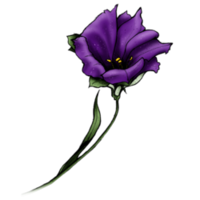More on Rescue Remedy
My piece about Rescue Remedy has brought in a lot of questions about where to obtain it.
In the United States, Australia and most of Europe consumers can buy it over the counter without a prescription. Most health food stores in the United States have it, and you can order it on line. A bottle is usually in the US$6-10 range, and even in my world, where there is a constant stream of hurt animals, children and adults, the bottle lasts a long time.
I also mentioned Nelsons, who I have relied upon for three decades or more. Nelsons USA is based in Wilmington, Massachusetts is part of the Nelsons group that is still located in London. It was founded in 1860, and Nelsons remains a family-owned business with a longstanding commitment to supplying high quality natural medicines. I have seen their products on sale in at least a dozen countries.
Apart from Rescue™ Remedy, they also manufacture Bach™ Original Flower Remedies, Nelsons Arnicare™, Nelsons Teetha™, and Nelsons™ Homeopathy.
There is a good website: that has more information. It also has a nice online tool for helping you decide on which other Bach Essence may be right for you.
Arnica Montana and Bruising
One of the best known homeopathic remedies is Arnica montana. Also known as Leopard’s Bane, mountain tobacco and sneezewort, it is found mainly in the mountains of Europe and in Siberia. The homeopathic remedy is made from the dried roots or sometimes the dried flowers of the plant.
It is the classical remedy for bruising, though homeopaths also use it in many other conditions. It was one of the first remedies that I ever learned about. In England we play a lot of rugby football, a game that can get rough. Most rugby clubs keep homeopathic Arnica in the dressing room, and it has always been said that it reduces the number of bruises after the game.
Yesterday, in the early afternoon, a ladder fell on my ankle: one of the perils of doing farm work. It was a very large heavy object and the injury bad enough that everyone wanted to cart me off to the ER for X-Rays. A swelling the size of half a grapefruit would tell most normal people that an X-Ray would be a good plan. But I decided to stick with Arnica and elevation of the offending article.
And as I was trying to limp around, I lamented the fact that I have only two legs and not four.
This morning – less than 18 hours later – the swelling has gone and there’s no bruising.
So that’s an "N of One" study.
Is there any decent research on Arnica?
One study claimed to find no benefit, but if you click on the link, you will see that there was some spirited argument about the experimental design.
Two other pieces of research have looked at the effects of using Arnica around the time of operation. One examined people having surgery for carpal tunnel syndrome, and reported benefit. Another looked at the use of Arnica in people having face lifts, and again reported less bruising.
A study from Israel indicated that it might reduce bleeding after childbirth.
It did not help muscle soreness after long distance running.
A study from Switzerland suggested that an Arnica-containing gel might help with the pain of mild to moderate osteoartritis of the knees. This wsa not a homeopathic preparation, but a herbal one, and occasionally contact dermatitis can occur if the herb is used. It’s uncommon, but worth knowing about. I’ve not heard of contact dermatitis occuring with homeopathic remedies.
I’ve always been most impressed by sudies of the use of homeopathy in animals, where the placebo effect is small. And we have seen excellent results in dogs, cats, horses and fish. There’s a study from India re-examining the treatment of bovine mastitis, and claiming that Arnica is one of a number of helpful remedies.
Arnica has also been shown to reduce swelling in a rat model.
The conclusion from all this?
Apart from my experience today, the balance of evidence suggests that Arnica can help prevent bruising. It may have many other uses in the hands of an experienced homeopath.
I always keep some handy and use it as an adjunctive treatment to more conventional approaches.







